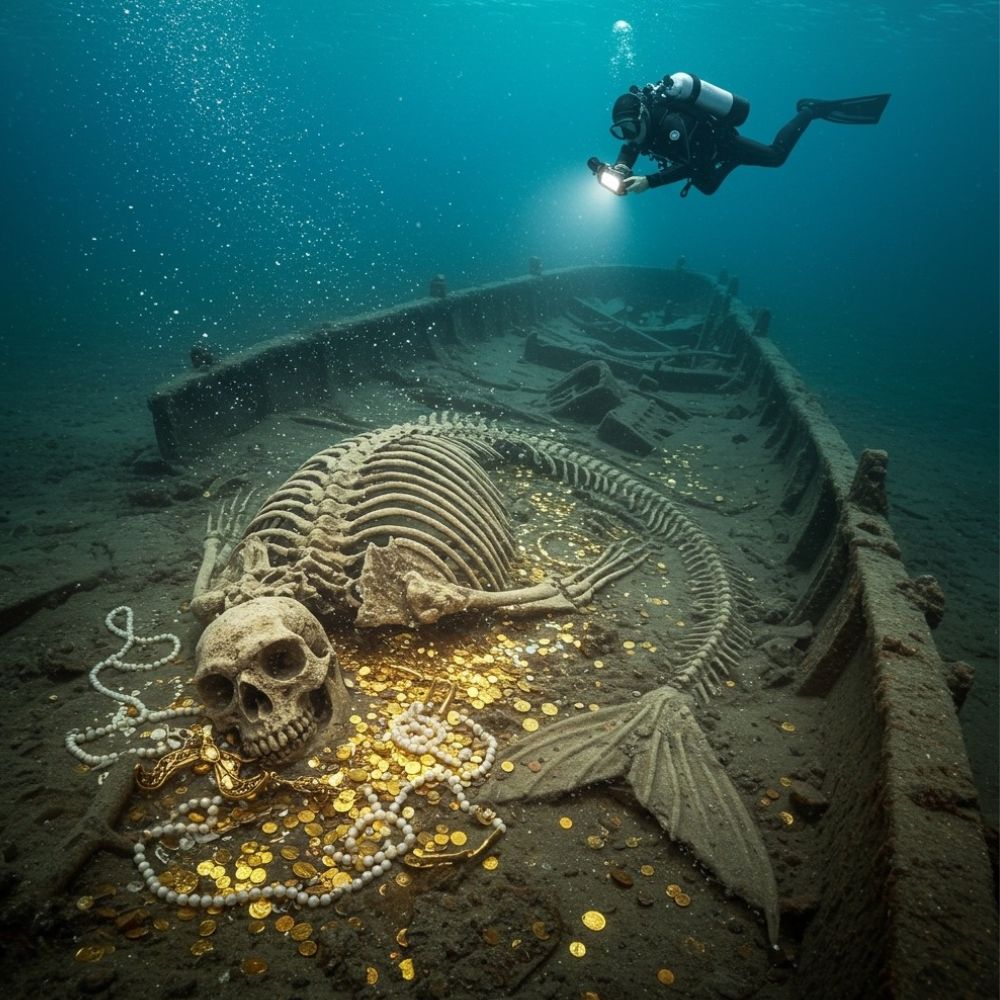The Siren’s Demise: Unearthing Atlantean Gold in the Aegean Depths

The year was 1978, a pivotal period for marine archaeology in the Aegean. Dr. Aris Thorne, a seasoned underwater archaeologist with a reputation for both meticulousness and a healthy disregard for academic dogma, guided the Triton, a modest but well-equipped research vessel, through the choppy waters off the coast of Santorini. His current fixation wasn’t another Bronze Age trading vessel, but a peculiar anomaly detected by side-scan sonar—a structure far too large and regular to be a natural formation, resting at an improbable depth of nearly 300 meters.
“Another promising ghost, Aris?” his skeptical colleague, Dr. Elena Petrova, would quip. She preferred tangible ceramic shards to Thorne’s often-fantastical theories. Yet, even Elena found herself drawn to the faint, metallic signature radiating from the anomaly.
On a blustery September morning, Aris donned his rebreather, the cutting-edge technology allowing for extended deep dives. As he descended, the vivid cerulean of the surface slowly gave way to an ethereal twilight. The pressure mounted, a familiar embrace, as he navigated towards the sonar’s coordinates. Then, through the gloom, it materialized: not a grand temple or a fortified city, but the haunting silhouette of a singular, elongated vessel—a ship, unlike any he had ever documented.
Its timbers, remarkably preserved by the frigid, oxygen-deprived depths, were unlike known Greek or Roman construction. It had an elegance, a sweeping curvature that defied conventional shipbuilding of any era. As Aris approached, his powerful underwater lamp cut through the murk, revealing a scene that sent a shiver, not of cold, but of profound wonder, down his spine.
Nestled within the ship’s stern, where a captain’s cabin might have been, lay a skeleton of impossible proportions. It was undeniably humanoid from the waist up, with a strikingly large cranium and a broad ribcage. But below, where legs should have been, stretched a magnificent, articulated caudal fin, complete with delicate, bony rays. It was the complete skeletal remains of what could only be described as a merfolk.
Scattered around the skeletal remains, shimmering faintly in his lamp’s beam, was a veritable carpet of gold coins. These weren’t the familiar darics or staters of ancient Greece. Their assay suggested an alloy unknown to terrestrial metallurgy, and the intricate, alien glyphs stamped upon their surfaces defied immediate identification. Interspersed with the coins were long strands of lustrous pearls, some as large as pigeons’ eggs, perfectly preserved.
“The Siren’s Demise,” Aris whispered into his regulator, the words feeling utterly inadequate for the spectacle before him. He carefully documented every detail, the dimensions of the skeleton, the unique iconography of the coins, the strange, iridescent quality of the pearls. This wasn’t merely a shipwreck; it was a sarcophagus, a time capsule preserving a legend.
Back on the Triton, the news caused an uproar. Elena, initially dismissive, stared at the high-resolution photographs with wide, disbelieving eyes. The unique metallurgical composition of the gold, the undeniable osteological evidence of a merfolk, and the fantastical yet tangible ship—it all pointed to one unbelievable conclusion.
The ship, dubbed “The Atlantean Cygnet” by Thorne, was dated using advanced spectroscopic analysis of its unique timber. The results placed its sinking around 1500 BCE, coincident with the cataclysmic eruption of Thera, which many theorists linked to the demise of Atlantis. The coins, when analyzed by a specialist in ancient scripts, revealed fragments of a language uncannily similar to proto-Linear A, with additional symbols suggesting a deeper, more esoteric origin.
Aris Thorne, once considered an outlier, found himself at the epicenter of a paradigm shift. The find, later dubbed “The Aegean Atlantis Discovery,” didn’t just rewrite maritime history; it shattered the very boundaries of human understanding of ancient civilizations. The skeletal remains, meticulously recovered and preserved in a specially constructed underwater laboratory, became known as “The Aegean Mermaid.” Her presence, alongside the exotic gold, whispered tales of a lost civilization, of beings who navigated the deep, and perhaps, of a tragic encounter with a world both wondrous and cruel.
The Siren’s Demise in the Aegean Depths was no mere legend. It was a tangible, breathtaking testament to a past far richer, and far more mysterious, than humanity had ever dared to imagine. And Dr. Aris Thorne, lamp in hand, had merely scratched the surface of its profound secrets.
